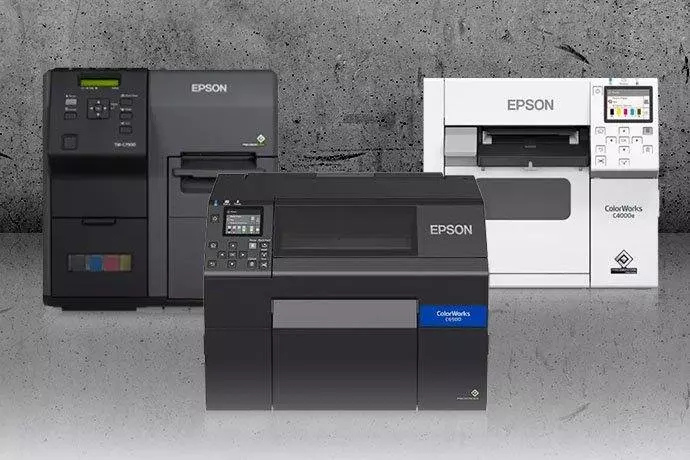Sublimation printing is a highly popular method for creating vibrant, custom designs on a variety of items such as t-shirts, mugs, and other promotional products. While there are dedicated sublimation printers available in the market, you can easily convert your existing Epson printer into a sublimation printer at home. This conversion can save you money while allowing you to create high-quality prints for personal or business use.
In this guide, we’ll take you through the step-by-step process of converting your Epson printer to sublimation printing in 2025. Whether you're an entrepreneur or a hobbyist, this guide will help you unlock the full potential of your Epson printer for sublimation printing.
What is Sublimation Printing?
Sublimation printing is a heat transfer process in which dye-based ink turns into gas under heat and pressure. The gas then bonds directly with polyester fibers, creating vibrant, long-lasting designs that become an intrinsic part of the fabric or material. Unlike traditional inkjet printing, sublimation does not leave ink on the surface; instead, it penetrates the material, making it more durable.
Sublimation is widely used for printing on fabrics, mugs, metal, and even certain types of leather. It produces bright and long-lasting prints, which is why it’s favored for custom products like t-shirts, keychains, phone cases, and more.
Why Convert Your Epson Printer for Sublimation Printing?
There are several reasons to convert your Epson printer to sublimation:
- Cost-effective: Converting a regular Epson printer to a sublimation printer is a more affordable option than purchasing a dedicated sublimation printer.
- High-Quality Results: Epson printers are known for their excellent print quality, making them ideal for sublimation printing.
- Easy Process: Converting an Epson printer to sublimation is relatively straightforward and can be done with minimal effort.
With the right setup, you can start producing vibrant, professional-grade sublimation prints at home.
Steps to Convert Your Epson Printer to Sublimation Printing
Follow these simple steps to convert your Epson printer into a sublimation printer and start creating custom designs.
1. Gather the Necessary Equipment
Before starting the conversion process, ensure you have all the necessary supplies:
- Epson Printer: You can use models like the Epson EcoTank series (ET-2720, ET-15000) or other compatible Epson inkjet printers.
- Sublimation Ink: Purchase sublimation ink that is compatible with your Epson printer model. Brands like Sawgrass, Hiipoo, and Printers Jack offer excellent sublimation ink options.
- Sublimation Paper: Get high-quality sublimation transfer paper for transferring your design to various materials.
- Heat Press Machine: A heat press is essential for transferring your sublimation designs to items like t-shirts, mugs, or other substrates.
- Refillable Ink Cartridges or Ink Bottles: Depending on your Epson printer model, you may need to use either refillable cartridges or direct ink bottles.
- Protective Gloves: Always wear gloves when handling sublimation ink to prevent staining your hands.
2. Install Sublimation Ink into Your Epson Printer
The first step in the conversion process is to replace the standard ink in your Epson printer with sublimation ink.
- Remove the Standard Ink Cartridges: Open the printer and remove the regular ink cartridges that came with the Epson printer.
- Install Sublimation Ink: Carefully install the sublimation ink cartridges into the printer. If your printer uses refillable ink tanks (like the Epson EcoTank series), you can pour the sublimation ink directly into the tanks.
Tip: Ensure that you use sublimation ink that is specifically designed for Epson printers to avoid any compatibility issues.
3. Perform a Printer Head Cleaning
After installing the sublimation ink, it’s essential to clean the print head to ensure the ink flows smoothly. Many Epson printers have a built-in cleaning function, which you can access via the printer’s control panel or software.
- Run the Cleaning Cycle: Use the printer’s cleaning cycle to flush any leftover regular ink from the printhead and ensure the sublimation ink is flowing smoothly.
- Test Print: After cleaning, run a test print on regular paper to check the quality and alignment of the ink.
4. Install Sublimation Printing Software
To begin printing your designs, you will need a design program that supports sublimation printing. Programs like Adobe Photoshop, CorelDRAW, and Adobe Illustrator are widely used for creating sublimation designs.
- Install Printer Drivers: Make sure that your Epson printer is properly installed on your computer with the necessary drivers. For sublimation printing, select the appropriate paper type (such as photo paper) and adjust the print settings for optimal color output.
- Design Your Artwork: Create or import your design into the software. Be sure to adjust the design’s size according to the material you will be sublimating.
5. Print the Design Using Sublimation Paper
After preparing your design, it’s time to print it onto sublimation paper.
- Mirror Your Design: Always mirror the design before printing to ensure the correct orientation when transferred onto the final product.
- Print on Sublimation Paper: Load the sublimation paper into your Epson printer and ensure that the printer settings match the type of paper you are using. High-quality sublimation papers help achieve better color reproduction and detail.
Tip: If you are printing on fabric, ensure that it is polyester or coated material, as sublimation works best on synthetic fibers.
6. Heat Transfer Your Design
Once your design is printed on the sublimation paper, it’s time to transfer it onto your substrate (like a t-shirt, mug, or metal surface).
- Set Up the Heat Press: Set the heat press to the required temperature (usually around 375°F to 400°F) depending on the material you're using. For fabrics, a typical heat press time is about 45-60 seconds.
- Position the Printed Paper: Place the printed sublimation paper face-down onto the substrate and secure it with heat-resistant tape.
- Press and Transfer: Close the heat press, apply moderate pressure, and wait for the designated time. Be careful not to overheat or underheat the item.
7. Allow the Item to Cool
Once the transfer is complete, carefully remove the item from the heat press and allow it to cool before handling. This will help the ink set properly and avoid smudging.
Tips for a Successful Sublimation Printing Process
- Always Test Print First: Before starting large projects, do test prints to fine-tune your settings and make sure everything works perfectly.
- Monitor Ink Levels: Keep an eye on ink levels to avoid running out during a print job.
- Use the Right Substrates: For optimal results, ensure you are using materials that are sublimation-friendly, such as polyester fabric, coated ceramics, or metal.
Common Issues and Troubleshooting
Despite the relatively simple process, you might face some issues. Here are a few troubleshooting tips:
- Faded Prints: This can be caused by incorrect temperature or time settings. Ensure the heat press is set to the recommended levels.
- Uneven Transfers: Uneven pressure or incorrect paper alignment can cause this. Always make sure the paper is secure and evenly pressed.
- Clogged Printhead: If the printhead is clogged, run the cleaning cycle again or use a printhead cleaning solution to clear it.
Conclusion
Converting your Epson printer to a sublimation printer is a great way to enter the world of custom printing without spending a lot of money on a dedicated sublimation printer. By following these simple steps, you can start creating vibrant, high-quality prints on a variety of substrates. Whether you're using it for personal projects or launching a business, sublimation printing offers endless possibilities.
Start the conversion today, and with some practice and creativity, you’ll be producing beautiful, professional-grade products from home!
Sources
- How to Convert Your Epson Printer to Sublimation Printing.
- Sublimation Printing Guide for Beginners.
- Best Sublimation Printers for 2025.



Comments ()